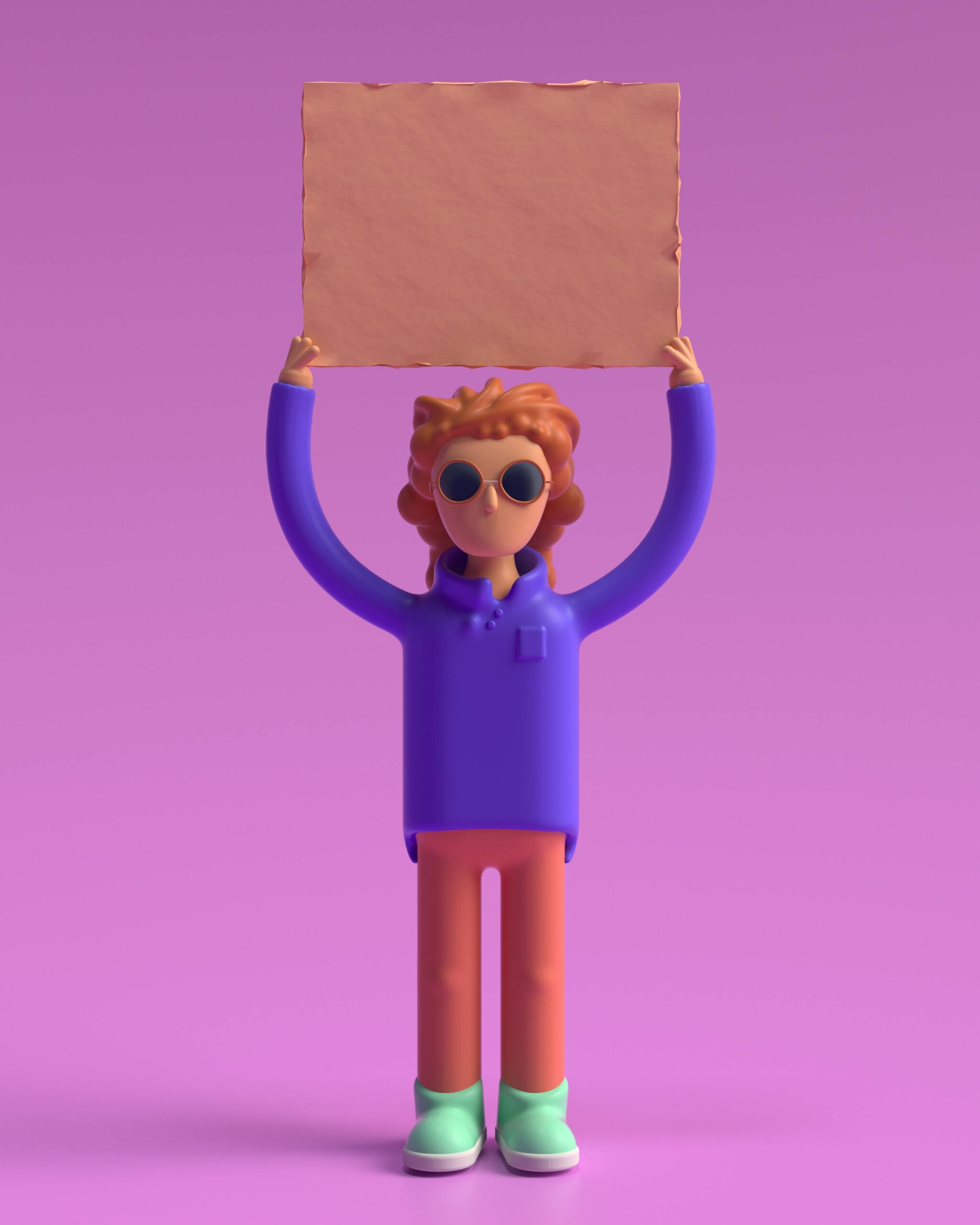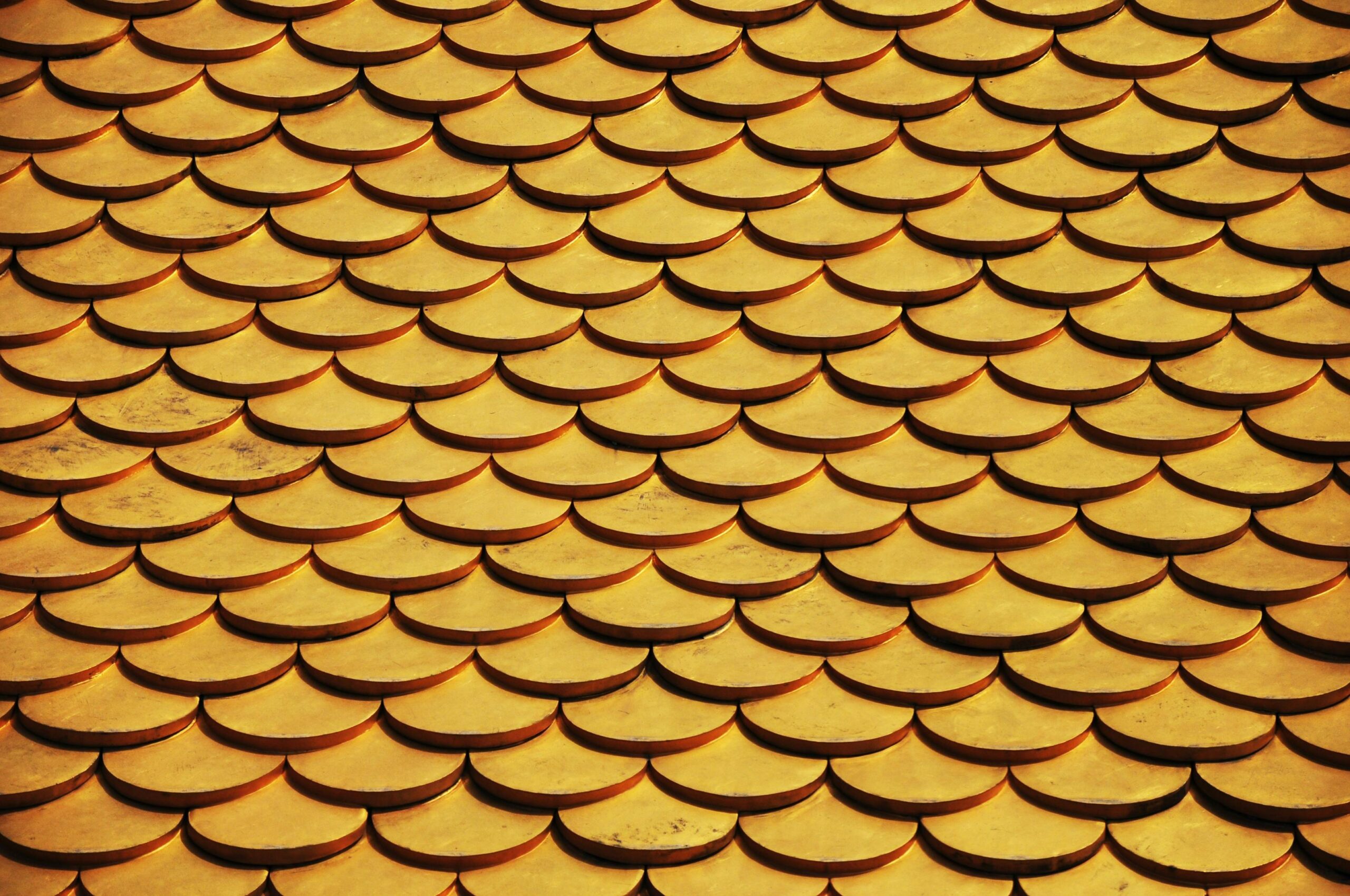Unlock New Dimensions: How to Edit in 3D Affinity Designer

Introduction
Have you ever looked at a stunning 3D design and wondered how it was created? The world of three-dimensional art can seem complex, but with the right tools and guidance, it’s more accessible than ever. Learning how to edit in 3D Affinity Designer can open up a vast array of creative possibilities, transforming your flat designs into immersive, dynamic visuals. Whether you’re a seasoned graphic designer looking to expand your skillset or a budding artist eager to dive into 3D, mastering these tools is essential for creating professional and eye-catching visuals that stand out in today’s competitive landscape.
Affinity Designer, known for its powerful vector and raster capabilities, also offers robust features that make it surprisingly easy to bring your ideas into the third dimension. From manipulating basic shapes to crafting complex models, this software provides everything you need to start your 3D journey. So, let’s delve into the core concepts and techniques, and discover why understanding how to edit in 3D Affinity Designer should be a cornerstone of your design toolkit.
The Power of Perspective: Why Mastering 3D Editing in Affinity Designer Matters
In the current visual culture, depth and realism can significantly elevate your design work. The importance of mastering 3D tools cannot be overstated. These tools allow designers to create more realistic and immersive designs that capture attention and convey information more effectively. By learning how to edit in 3D Affinity Designer, you can add tangible depth and dimension to your work, making it pop off the screen and truly stand out from the crowd.
This skill is especially valuable for students of design and aspiring professionals who are looking to build a strong foundation in digital art. Proficiency in 3D software not only enhances your portfolio but also demonstrates versatility and a forward-thinking approach to design. As industries increasingly adopt 3D visualization for product design, architecture, gaming, and marketing, having the ability to edit in 3D Affinity Designer positions you at the forefront of these exciting developments.
Getting Started: Navigating the 3D Workspace for Editing in Affinity Designer
To begin your journey into three-dimensional design, you’ll first need to familiarize yourself with the 3D workspace within Affinity Designer. Accessing this feature is intuitive and can be done in just a few clicks. Here’s a step-by-step guide to help you get started with how to edit in 3D Affinity Designer:
- Open Your Project: Launch Affinity Designer and open the document or create a new one where you want to incorporate 3D elements.
- Switch to 3D Mode: Navigate to the “View” menu at the top of your screen. From the dropdown, select “3D View.” This action will activate the specialized 3D workspace, giving you access to the dedicated 3D tools and controls. You’ll notice the canvas might shift, and a new set of manipulation handles may appear around your selected objects.
- Explore Tools: Once in 3D View, take a moment to observe the various tools available in your toolbar. You’ll find options specifically designed for 3D manipulation, such as rotate, scale, and move tools. These are crucial for positioning and transforming your 3D objects within the virtual space. Experiment with these tools to get a feel for how they affect your chosen shapes.
Key features such as these allow you to manipulate objects effortlessly. For instance, try duplicating an object using the Power Duplicate function (Cmd-J on Macs, Ctrl-J on Windows) and then applying a series of transformations (like moving and rotating) to quickly build complex arrangements or patterns in 3D space. Practical examples like these help beginners feel more comfortable as they learn how to edit in 3D Affinity Designer.
Setting Up Your First 3D Design Project
When setting up your first 3D design, the best approach is to start with simplicity. Begin with basic 2D shapes that can be easily extruded into 3D forms, such as:
- Rectangles and Squares: Great for creating cuboid structures.
- Circles and Ellipses: Perfect for cylinders or spheres when extruded.
- Text: Turn regular text into bold 3D lettering for logos or headlines.
These basic forms are easy to manipulate and provide a solid foundation for more complex designs. As you become more comfortable with the tools, you can experiment with extruding text, converting shapes to curves for more nuanced manipulations, or even importing custom 3D models (though this feature is more about integration than direct 3D modeling within Designer). The key is to build your confidence layer by layer.
Utilizing Essential 3D Tools: Extrude, Bevel, and Texture Mapping to Edit in 3D Affinity Designer
Once you’re comfortable with the basics of navigation, it’s time to explore some of the most essential 3D tools that truly bring your designs to life. These include extrude, bevel, and texture mapping – all integral parts of how to edit in 3D Affinity Designer.
- Extrude: This is the most fundamental 3D operation in Affinity Designer. It adds depth by extending a flat 2D shape along a defined axis, turning it into a 3D object. Imagine taking a circle and pulling it out to create a cylinder, or a square to make a cube. You can control the depth of the extrusion, creating anything from thin panels to thick blocks.
- Bevel: After extruding, you’ll often have sharp, angular edges. The bevel tool rounds these edges, giving your objects a smoother, more polished, and realistic appearance. You can adjust the radius and profile of the bevel to achieve different effects, from subtle softening to pronounced rounded corners.
- Texture Mapping: This powerful feature allows you to apply images, patterns, or materials onto the surfaces of your 3D objects, making them look incredibly realistic. Instead of just a plain color, you can make an object appear to be made of wood, metal, fabric, or any other material by applying a texture.
Using these tools effectively significantly enhances your designs when you edit in 3D Affinity Designer. However, there are common pitfalls too. For example, overusing textures or applying very strong bevels might clutter your design rather than improve it. Always remember, less is often more when working within 3D environments. The goal is to enhance realism and visual appeal, not to create a busy or unnatural look.
Common Pitfalls and How to Avoid Them When Editing in 3D
One common pitfall when learning how to edit in 3D Affinity Designer is not understanding how different tools interact with each other, or simply overdoing an effect. For instance, applying too much bevel can make an object look unnaturally rounded or inflated. It’s important to strike a balance between realism and artistic expression. Start with subtle adjustments and increase them gradually until you achieve the desired effect.
Another common mistake is neglecting the importance of lighting. Properly lit scenes can make even the simplest designs look impressive, while poor lighting can make complex models appear flat and unappealing. We’ll dive deeper into lighting next, but always remember that materials, light, and shadows work together to define form and realism.
Mastering Textures and Materials for Affinity Designer 3D Edits
Textures and materials play a huge role in making 3D designs pop. They add realism, tactile quality, and intricate detail that plain colors alone cannot achieve. When you edit in 3D Affinity Designer, consider these techniques for applying textures and working with materials effectively:
- Layer Blending Modes: Experiment with different blending modes (found in the Layers panel) to see how textures interact with underlying colors and other layers. Modes like “Multiply,” “Overlay,” or “Soft Light” can create subtle, integrated effects.
- Adjust Opacity: Fine-tune the opacity levels of your texture layers to achieve the desired effect without overwhelming other design elements. A lower opacity can create a hint of texture, while higher opacity can make the texture dominant.
- Seamless Textures: When applying textures, especially to larger surfaces, use seamless texture files. These are images designed to tile perfectly without visible seams, ensuring a continuous and realistic appearance.
- Procedural Textures: While Affinity Designer’s 3D tools are primarily for extrusion and beveling, understanding that more advanced 3D software often uses procedural textures (generated algorithms) can give you a hint of how advanced texturing works. For Designer, focus on how your imported image textures interact with the 3D form.
Achieving realistic visual effects with textures and materials requires practice, but it pays off big time once mastered. Think about how light would interact with the real-world material you’re simulating while placing textures, so they appear authentic during your edit in 3D Affinity Designer sessions.

Techniques for Applying Textures Effectively
To apply textures effectively, start by selecting high-quality images that genuinely match the theme and desired material of your design. You can often find free or paid seamless textures from various online libraries. Once imported, use Affinity Designer’s robust masking capabilities (layer masks, clipping masks) to control precisely where textures are applied, ensuring they blend seamlessly with existing elements. Consider how different textures will interact with the light sources you establish to create a cohesive and believable scene.
Lighting and Shadows for Realism: Enhancing Your 3D Affinity Designer Work
Lighting and shadows contribute immensely towards adding depth, dimension, and realism to any scene created through edit in 3D Affinity Designer. Properly set up lights illuminate areas correctly, highlighting key aspects of your design, whereas well-placed shadows add contrast, define form, and create dramatic effects.
Here are best practices regarding light placement when you edit in 3D Affinity Designer:
- Three-Point Lighting: A classic setup involves a Key Light (main light source, brightest), a Fill Light (softens shadows from the key light), and a Back Light (separates the object from the background, adding rim light).
- Position Main Light Sources Strategically: Place your primary light sources around focal points, ensuring even distribution across the entire canvas space. Consider the direction, intensity, and color of your lights.
- Use Ambient Occlusion Settings Wisely: Ambient occlusion (AO) simulates soft shadows from indirect light, adding realism to corners and crevices. While important, excessive darkness from AO may obscure important details, thus ruining the overall balance achieved via edit in 3D Affinity Designer efforts. Balance it to enhance depth without muddying your design.
Working with Shadows to Enhance 3D Edits
Shadows play a critical role in defining form, indicating light source direction, and adding realism to your 3D designs. Here’s how you can work effectively with shadows:
- Soft vs. Hard Shadows:
- Soft shadows blend smoothly into surrounding areas, giving a more natural appearance. These are typical of large, diffused light sources (like a cloudy sky) and are especially useful in outdoor or natural scenes.
- Hard shadows have defined, sharp edges. These are characteristic of small, direct light sources (like the sun on a clear day or a spotlight) and are suitable for indoor environments with strong artificial lighting.
- Shadow Intensity: Adjust the intensity (darkness) of shadows based on the strength of the light source and its distance from objects. Stronger lights closer to objects generally produce darker, crisper shadows.
- Shadow Direction: Always align the shadow direction with your primary light source to maintain consistency throughout the design. Inconsistent shadow directions immediately break the illusion of realism.
Incorporating these techniques helps ensure that shadows enhance rather than detract from your overall composition when you edit in 3D Affinity Designer. Understanding how light and shadow interact is fundamental to creating believable 3D scenes. For more advanced lighting principles, external resources like lighting tutorials for 3D artists can be incredibly beneficial.
Final Touches and Optimization: Polishing Your 3D Affinity Designer Work
Once you’ve built your 3D model, applied textures, and set up your lighting, it’s time for the crucial final steps: refining and optimizing your 3D designs before finalizing and sharing them.
Steps to Refine and Optimize Your 3D Designs:
- Refine Details: Zoom in closely to inspect every corner of your model. Look for any rough edges, misaligned textures, or subtle imperfections. Attention to these small details can significantly elevate the perceived quality of your design.
- Optimize Performance: While Affinity Designer handles 3D elements efficiently, complex scenes can still strain your system. Reduce unnecessary polygons (if you’ve imported complex models) or simplify geometry where possible to improve rendering speed without compromising visual quality. This is more relevant in dedicated 3D modeling software but can apply if you’re bringing in outside 3D assets.
- Color Correction & Post-Processing: After rendering, you can use Affinity Designer’s powerful image editing tools (like Curves, Levels, HSL adjustments) to enhance colors, adjust contrast, and add final stylistic touches. This step is often referred to as “post-processing” in 3D workflows.
- Export Settings: Choose appropriate file formats and resolutions depending on where your design will be used. For web use, PNG or JPEG are common. If your 3D work is destined for further 3D application or 3D printing, you might export to formats like OBJ (Wavefront Object) or STL (stereolithography), though Designer’s 3D capabilities are more for visual representation within the software rather than complex 3D model export for other applications.
Tips on Exporting and Sharing Your 3D Designs Efficiently
After refining your design, it’s time to export it for sharing. Select the right format based on the platform and intended use. For web galleries or social media, high-quality PNG or JPEG files are best. Ensure that compression settings are balanced to preserve quality while keeping file sizes manageable for faster loading.
Finally, share your work on social media platforms like Behance or Dribbble, or dedicated design communities to get feedback, inspiration, and connect with fellow creators. Your portfolio is your best asset, so populate it with your best 3D creations.
Troubleshooting Common Issues When You Edit in 3D Affinity Designer
As you learn how to edit in 3D Affinity Designer, you might encounter some common hurdles. Knowing how to troubleshoot these can save you a lot of time and frustration.
Address Common Problems Users Face:
- Slow Performance: If your computer struggles with rendering large files or navigating complex 3D scenes, this is often due to system resources.
- Texture Issues: Misaligned, stretched, or pixelated textures can ruin otherwise perfect designs.
- Lighting Problems: Uneven lighting, overly dark shadows, or flat-looking scenes are common.
- Objects Not Appearing in 3D: Sometimes, 2D objects might not correctly convert or appear in 3D view.

Solutions to Typical Errors and Performance Issues:
- For Slow Performance: Try closing background applications to free up RAM. If your system is consistently slow with 3D work, consider upgrading your computer’s RAM or graphics card (GPU). Affinity Designer can leverage GPU acceleration for some tasks.
- For Texture Issues: Double-check your UV mapping if you’re importing external 3D models or manually adjusting textures. Ensure your texture images are high-resolution and seamlessly tileable. Resetting texture coordinates can sometimes resolve misalignment.
- For Lighting Problems: Experiment with different light setups. Use reference images from real-world photography or other 3D renders to guide your lighting arrangement. Remember the three-point lighting system.
- For Conversion Problems: Ensure your 2D objects are properly selected and are suitable for extrusion (e.g., closed paths). Sometimes simplifying complex vector paths can help.
For persistent issues or more advanced techniques, the official Affinity Designer forums and online communities are excellent resources for specific troubleshooting and learning from experienced users. For official support and detailed tutorials, the Affinity Designer support pages are an invaluable resource.
Embrace the Third Dimension: Master How to Edit in 3D Affinity Designer!
Learning how to edit in 3D Affinity Designer is a skill that will undoubtedly set you apart in the design world. It empowers you to add depth, realism, and a captivating quality to your work that resonates with modern audiences. From understanding the basics of extrusion and beveling to mastering the nuances of lighting and textures, each step you take builds confidence and expands your creative horizon.
Remember, consistent practice and experimentation are key to improving your skills. Don’t be afraid to try new techniques, push boundaries, and learn from every design you create. The world of 3D is vast and exciting, and with Affinity Designer, you have a powerful tool at your fingertips to bring your visions to life. Start experimenting today, and unlock the incredible potential of three-dimensional design!




